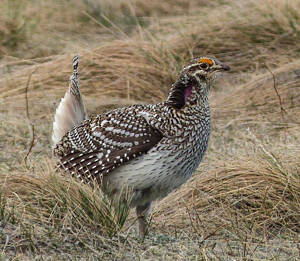
The Sharp-tailed prairie Grouse (Tympanuchus phasianellus) is known as sharp-tailed grouse and has seven subspecies.The pintail prairie grouse is a forest bird, usually hiding in the branches of the pine tree, sometimes people walk nearby, still not moving: in the underforest brush slowly, when frig...
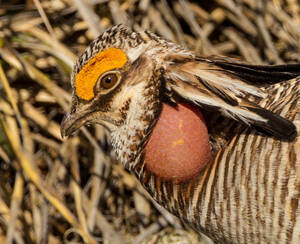
The Lesser Prairie-chicken (Tympanuchus pallidicinctus) has no subspecies.The range of the little grass fowl is up to 5 square kilometers for males, and 2.3 square kilometers for females. The fragmentation of local habitats by farming and human construction has put considerable pressure on the range...
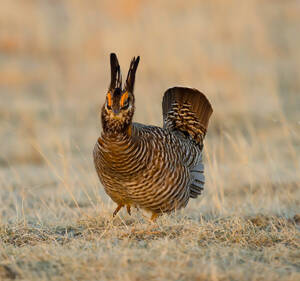
The Prairie grouse (Tympanuchus cupido), also known as Greater Prairie-chicken, has three subspecies.Prairie grouse usually live in a relatively small area of a few hundred acres to cover and meet their food and water needs. If food is in short supply, they can also fly several miles for food. It is...
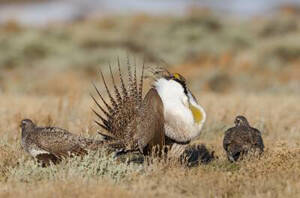
The Sage grouse (Centrocercus urophasianus), also known as Greater Sage-grouse without subspecies, is the largest grouse in North America.Sage grouse do not fly much except up and down trees. Because of their clumsy body, they flap their wings violently when they first take off, and make a ge-ge-ge...
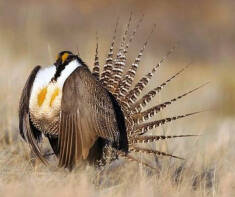
The Lesser sage Grouse (Centrocercus minimus) is Gunnison Grouse, no subspecies.The little sage grouse does not fly much except up and down trees. Because of his clumsiness, he fluttered violently when he first took off. When flying, the rise speed is slow, and after reaching a certain height, the w...
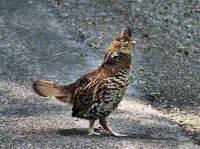
The Ruffed Grouse (Bonasa umbellus) has 15 subspecies.Shawl hazel chicken is a non-migratory bird, is a forest bird, the breeding season is not in groups, other seasons more into small groups of activities, there are 3-4 or 6-7 a group, there are more than 10. Foraging begins at dawn. When looking f...
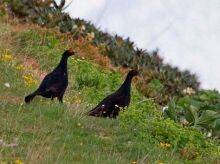
Tetrao mlokosiewiczi, the Caucasian black lyric chicken, is active in the morning and evening in large forest clearings, forest edges and sunny grass or shrubs, and in the rest of the forest by falling trees, shrubs or grass clearings. It mainly roosts in larch trees at night. In winter, they often...
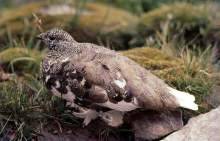
The White-tailed Ptarmigan (Lagopus leucurus) has five subspecies.The winter white-tailed thunderbird lives in tundra, tundra scrub forests and rocky meadow areas near the North Pole and is very hardy. Like to be active in the woods, sometimes also to the farmland. Most of them move in groups except...
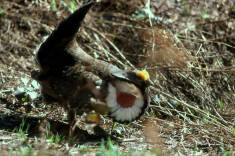
The blue Grouse (Dendragapus obscurus), also known as Dusky Grouse, is a relatively large grouse with four subspecies.Blue grouse tend to form smaller groups in the warmer months and larger groups in the winter, spending most of their time at the top of trees feeding on needles or pine seeds. In sum...
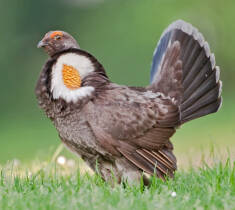
The Sooty Grouse (Dendragapus fuliginosu) is a relatively large grouse with four subspecies.The black grouse is an early adult. These birds live on the ground or in the trees in winter. In winter, it eats mainly the needles of fir and Douglas fir, but occasionally hemlock and pine needles; In the su...

Symphalangus syndactylus (scientific name: Symphalangus syndactylus) is called Siamang in foreign language, and has no subspecies.Symphalangus syndactylus is a diurnal animal that likes to live in small groups as a family unit. It is a monogamous primate, usually consisting of 5 individuals in a gro...
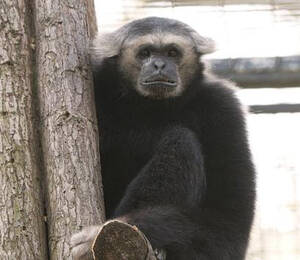
Pileated Gibbon (scientific name: Hylobates pileatus) is also known as Pileated Gibbon in English. It has no subspecies.Pileated gibbons usually form a family of 4, including an adult male and an adult female, and the rest are semi-adult and young gibbons, with an adult male serving as the leader. G...
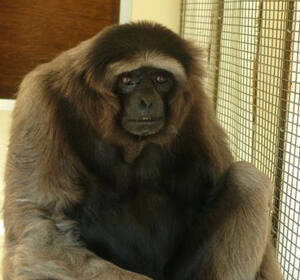
The gray gibbon (scientific name: Hylobates muelleri) is also known as Müller's Bornean Gibbon in English. It has three subspecies.A family of gray gibbons usually consists of 4 individuals, including an adult male and an adult female, and the rest are semi-adult and young gibbons, with an adul...
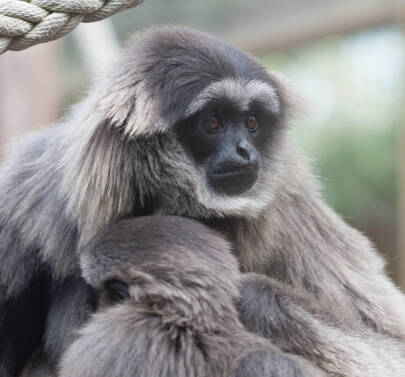
Silvery Javan Gibbon (scientific name: Hylobates moloch) is called Silvery Javan Gibbon in English. There are 2 subspecies.Silvery Javan Gibbon usually gathers in small groups of families, usually 4. Among them, there is an adult male and an adult female, and the rest are semi-adult and young gibbon...
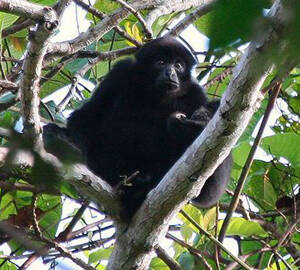
Kloss’s Gibbon (scientific name: Hylobates klossii) is also known as Kloss’s Gibbon in English. It has no subspecies.Clark's gibbons usually live in small groups of families, including one adult male and one adult female, and the rest are semi-adult and young gibbons, with an adult male servin...
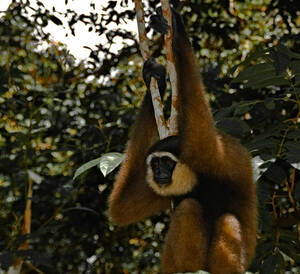
The white-bearded gibbon (scientific name: Hylobates albibarbis) was once a subspecies of the black-handed gibbon and was identified as an independent species in 2001.White-bearded gibbons usually form a family of 4, including an adult male and an adult female, and the rest are semi-adult and young...
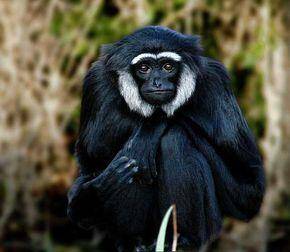
The black-handed gibbon (scientific name: Hylobates agilis) is also known as Agile Gibbon in English. It has two subspecies.Black-handed gibbons usually form a family of 4, including an adult male and an adult female, and the rest are semi-adult and young gibbons, with an adult male as the leader. G...
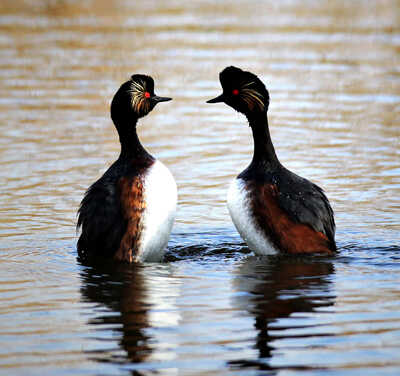
The Black-necked Grebe, with 4 subspecies, is a medium-sized water bird.Similarly, the horned grebe has a straight mouth and a flat forehead; The front neck and chest of the summer feather are red, and the feathers behind the eyes are not fanned out but in a family shape. The winter feather below th...
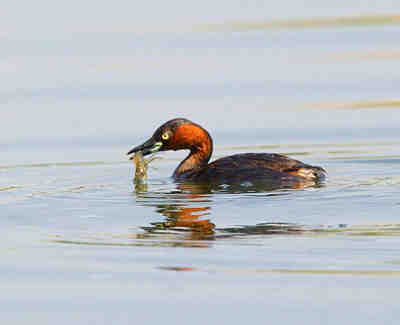
pit Grebe (pit) foreign name red-necked grebe, there are 2 subspecies in the world, that is, Red necked Grebe named subspecies P. g. Grisegena (Boddaert, 1783) and the Red Necked Grebe Northern subspecies P. g. holboellii (Reinhardt, 1854). China has only a northern subspecies, which breeds in Heilo...